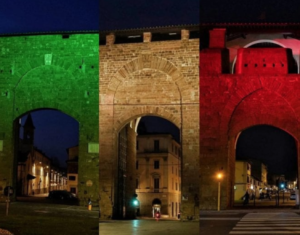Festa della Repubblica 2023 in Florence: Reflecting on History and Celebrating Unity

FESTA DELLA REPUBBLICA: June 2 marks the anniversary of the referendum of 1946 when the Italians collectively voted to disband the active monarchy and establish a republic. The date’s importance is analogous to July 14 in France (anniversary of the storming of the Bastille) or to July 4th in the United States (anniversary of the declaration of independence from Great Britain). With a plethora of activities and events planned, Florence is set to host a grand celebration that captures Italian unity.
The day begins with a flag-raising ceremony, at 10 am, in Piazza della Signoria, in the presence of civil and military city authorities. To follow, on the steps of Palazzo Vecchio, there will be an address from the President of the City Council of Florence, Luca Milani, as well as the reading of the message from the President of the Republic by the Prefect of Florence, Francesca Ferrandino.
For the first time this year many of the iconic museums around Florence will be open free of charge during Festa della Repubblica. The Uffizi, Bargello National Sculpture Museum, Medici Chapels, Palazzo Davanzati Museum of the Renaissance Home, and the Archeological Museum are just a few of the institutions that will be free this Friday. While the sounds of live music and smells of street vendors may make it difficult to leave the streets of the city, these museums shouldn’t be missed out on. Hours for the museums in Florence are listed below.
MUSEUM HOURS
8:15 am – 6:50 pm: Uffizi, Accademia Gallery, Palatine Gallery, Porcelain Museum, Costume Gallery, Silver Museum in the Pitti Palace complex.
8:15 am – 4:50 pm: Bargello National Sculpture Museum
8:30 am – 2 pm: Archeological Museum
8:15 am – 4:50 pm: Medici Chapels
8:15 am – 1:50 pm: Palazzo Davanzati
8:15 am – 7:10 pm – Boboli Gardens, Bardini Gardens
With access to the historical and cultural institutions that are Florence’s most famous museums being made fully accessible to the public, international visitors are left reflecting on the historical weight of the national holiday. The Italian referendum in 1946 is clearly a key moment in the history of the nation, but without the surrounding context of the event it’s difficult to truly understand it from an ethical perspective.
Italy’s transition to a republic came after the tumultuous years of World War II and the fall of Fascism. The referendum was a clear expression of the nation’s desire for political change and a fresh start. The monarchy, which had been associated with and openly supported the Fascist regime under Benito Mussolini, was seen by many as the betrayer of the Italian people. After handing the keys to a horrific dictator who had exploited his own people, the trust people had in their king dissipated. While the last king of Italy was Umberto II, he only was in power for a month and is referred to as “May King” due to that fact. His father, King Victor Emmanuel III, is the monarch who supported Mussolini and the contempt citizens had towards him is evident in the fact that his heirs weren’t permitted back in Italy until 2002.
The referendum was the first example of universal suffrage in Italy, with each person counting as one vote. Additionally, it was the first instance of women having the opportunity to vote in Italy. The result of the popular vote was as follows: 12,717,923 votes for the republic and 10,719,284 for the monarchy (with a percentage, respectively, of 54.3% and 45.7%), communicated on June 10, 1946. This vote, and the establishment of the Italian Republic, represented a commitment to democracy, equality, and the rule of law, laying the foundation for a new era of governance in the country. Festa della Reupblica, and its ensuing festivities are a celebration of this commitment, offering an opportunity to appreciate Italy’s journey towards democracy and the importance of unity, self-governance, and freedom. (Jonah Foster)
